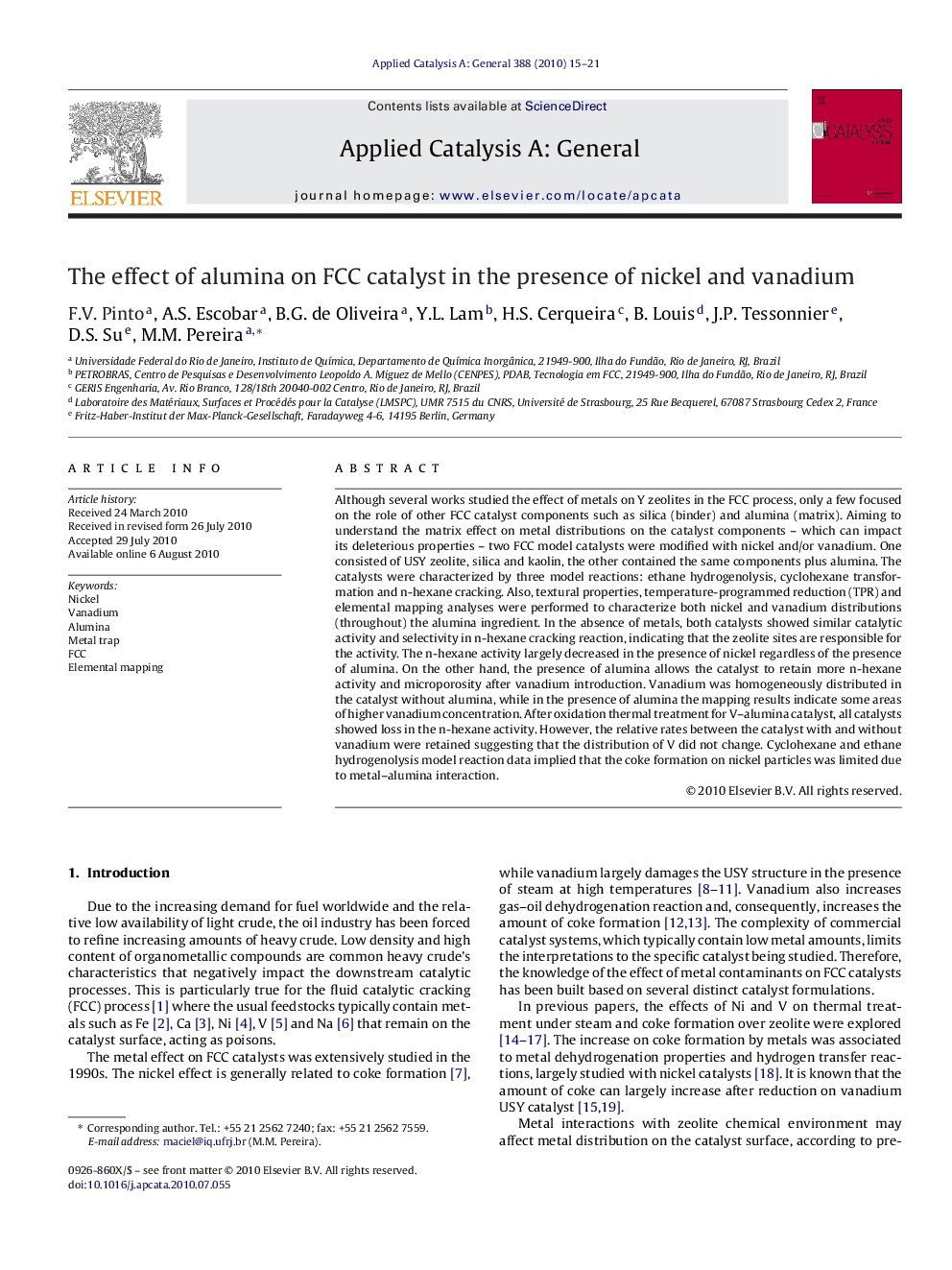| کد مقاله | کد نشریه | سال انتشار | مقاله انگلیسی | نسخه تمام متن |
|---|---|---|---|---|
| 41813 | 45901 | 2010 | 7 صفحه PDF | دانلود رایگان |

Although several works studied the effect of metals on Y zeolites in the FCC process, only a few focused on the role of other FCC catalyst components such as silica (binder) and alumina (matrix). Aiming to understand the matrix effect on metal distributions on the catalyst components – which can impact its deleterious properties – two FCC model catalysts were modified with nickel and/or vanadium. One consisted of USY zeolite, silica and kaolin, the other contained the same components plus alumina. The catalysts were characterized by three model reactions: ethane hydrogenolysis, cyclohexane transformation and n-hexane cracking. Also, textural properties, temperature-programmed reduction (TPR) and elemental mapping analyses were performed to characterize both nickel and vanadium distributions (throughout) the alumina ingredient. In the absence of metals, both catalysts showed similar catalytic activity and selectivity in n-hexane cracking reaction, indicating that the zeolite sites are responsible for the activity. The n-hexane activity largely decreased in the presence of nickel regardless of the presence of alumina. On the other hand, the presence of alumina allows the catalyst to retain more n-hexane activity and microporosity after vanadium introduction. Vanadium was homogeneously distributed in the catalyst without alumina, while in the presence of alumina the mapping results indicate some areas of higher vanadium concentration. After oxidation thermal treatment for V–alumina catalyst, all catalysts showed loss in the n-hexane activity. However, the relative rates between the catalyst with and without vanadium were retained suggesting that the distribution of V did not change. Cyclohexane and ethane hydrogenolysis model reaction data implied that the coke formation on nickel particles was limited due to metal–alumina interaction.
Figure optionsDownload high-quality image (298 K)Download as PowerPoint slideResearch highlights▶ The refine of heavy crude increases Ni and V amount in the catalyst. ▶ Two simplified FCC catalysts, with and without alumina were prepared. ▶ Alumina affects the distribution of both metals increasing the vanadium tolerance. ▶ V2O5 particles are formed on alumina reducing the number of zeolite acid sites. ▶ Alumina led to less reducible and more dispersed nickel species.
Journal: Applied Catalysis A: General - Volume 388, Issues 1–2, 20 November 2010, Pages 15–21